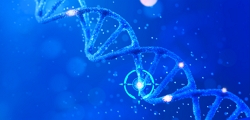-
REAGENT SERVICES
Hot!
-
Most Popular Services
-
Molecular Biology
-
Recombinant Antibody/Protein
-
Reagent Antibody
-
CRISPR Gene Editing
-
DNA Mutant Library
-
IVT RNA and LNP Formulations
-
Oligo Synthesis
-
Peptides
-
Cell Engineering
-
- Gene Synthesis FLASH Gene
- GenBrick™ Up to 200kb
- Gene Fragments Up to 3kb now
- Plasmid DNA Preparation Upgraded
- Cloning and Subcloning
- ORF cDNA Clones
- mRNA Plasmid Solutions New!
- Cell free mRNA Template New!
- AAV Plasmid Solutions New!
- Mutagenesis
- GenCircle™ Double-Stranded DNA New!
- GenSmart™ Online Tools
-
-
PRODUCTS
-
Most Popular Reagents
-
 Instruments
Instruments
-
Antibodies
-
ELISA Kits
-
Protein Electrophoresis and Blotting
-
Protein and Antibody Purification
-
Recombinant Proteins
-
Molecular Biology
-
Stable Cell Lines
-
Cell Isolation and Activation
-
 IVD Raw Materials
IVD Raw Materials
-
 Therapy Applications
Therapy Applications
-
Resources
-
- All Instruments
- Automated Protein and Antibody Purification SystemNew!
- Automated Plasmid MaxiprepHot!
- Automated Plasmid/Protein/Antibody Mini-scale Purification
- eBlot™ Protein Transfer System
- eStain™ Protein Staining System
- eZwest™ Lite Automated Western Blotting Device
- CytoSinct™ 1000 Cell Isolation Instrument
-
- Pharmacokinetics and Immunogenicity ELISA Kits
- Viral Titration QC ELISA Kits
- -- Lentivirus Titer p24 ELISA KitHot!
- -- MuLV Titer p30 ELISA KitNew!
- -- AAV2 and AAVX Titer Capsid ELISA Kits
- Residual Detection ELISA Kits
- -- T7 RNA Polymerase ELISA KitNew!
- -- BSA ELISA Kit, 2G
- -- Cas9 ELISA KitHot!
- -- Protein A ELISA KitHot!
- -- His tagged protein detection & purification
- dsRNA ELISA Kit
- Endonuclease ELISA Kit
- COVID-19 Detection cPass™ Technology Kits
-
- Automated Maxi-Plasmid PurificationHot!
- Automated Mini-Plasmid PurificationNew!
- PCR Reagents
- S.marcescens Nuclease Benz-Neburase™
- DNA Assembly GenBuilder™
- Cas9 / Cas12a / Cas13a Nucleases
- Base and Prime Editing Nucleases
- GMP Cas9 Nucleases
- CRISPR sgRNA Synthesis
- HDR Knock-in Template
- CRISPR Gene Editing Kits and Antibodies
-
![AmMag™ Quatro Automated Plasmid Purification]() AmMag™ Quatro automated plasmid purification
AmMag™ Quatro automated plasmid purification
-
![Anti-Camelid VHH]() MonoRab™ Anti-VHH Antibodies
MonoRab™ Anti-VHH Antibodies
-
![ELISA Kits]() ELISA Kits
ELISA Kits
-
![Precast Gels]() SurePAGE™ Precast Gels
SurePAGE™ Precast Gels
-
![Quatro ProAb Automated Protein and Antibody Purification System]() AmMag™ Quatro ProAb Automated Protein and Antibody Purification System
AmMag™ Quatro ProAb Automated Protein and Antibody Purification System
-
![Target Proteins]() Target Proteins
Target Proteins
-
![AmMag™ Quatro Automated Plasmid Purification]() AmMag™ Quatro automated plasmid purification
AmMag™ Quatro automated plasmid purification
-
![Stable Cell Lines]() Stable Cell Lines
Stable Cell Lines
-
![Cell Isolation and Activation]() Cell Isolation and Activation
Cell Isolation and Activation
-
 IVD Raw Materials
IVD Raw Materials
-
![Quick
Order]() Quick Order
Quick Order
-
![Quick
Order]() Quick Order
Quick Order
- APPLICATIONS
- RESOURCES
- ABOUT US
- SIGN IN My Account SIGN OUT
- REGISTER

![Peptide Modifications Peptide Modifications]()
Peptide Modifications
Over 300 modifications; Free amidation and acetylation
Includes Biotin, FITC, PEGylation, methylation, disulfide bonds KLH, BSA, OVA conjugationsNews & Blogs » Peptide News » Leveraging Antimicrobial Peptides to Counter Bacterial Resistance
Leveraging Antimicrobial Peptides to Counter Bacterial Resistance
Bacterial Resistance and the Antibiotic Pipeline
The World Health Organization "WHO" has ranked antimicrobial resistance as one of the top threats to public health worldwide. Their recent Global Antimicrobial Resistance and Use Surveillance System (GLASS) report, provides a view of bacterial resistance development trends since 2017 for 27 countries. The report confirms widespread high-resistance rates in bacteria responsible for common and severe infections. Among the significant findings is the high-resistance to ciprofloxacin, frequently used in treating patients with Escherichia coli urinary tract infections. Additionally, Klebsiella pneumoniae’s high-resistance to carbapenem antibiotics is limiting the treatment of patients with hospital acquired pneumonia and sepsis. Most dire is the detection of bacteria resistant to colistin, which is a naturally occurring cyclic peptide and currently the only option for patients with life-threatening infections caused by carbapenem resistant Enterobacteriaceae.

The WHO list of Global Priority Pathogens (GPP). This list was first published in 2017 and includes 12 bacterial families classified based on their antibiotic resistance and threat to human health. The first group, Priority 1-Critical, includes a series of multi-drug resistant pathogens linked to high-risk medical conditions. The GPP list was established in an effort to help guide research and development of new antibiotics. Retrieved from Manso et al. 2022. https://creativecommons.org/licenses/by/4.0/
Antibacterial resistance refers to the natural process by which bacteria develop mechanisms to contra rest the effects of antibiotics. Despite being a natural phenomenon, antibiotic misuse at the clinic has inevitably accelerated this process to a critical point (Manso et al. 2022). Currently, the WHO estimates that global mortality related to antibiotic resistance could climb up to 10 million by 2050 (Mancuso et al. 2021).
Against the backdrop of increased antibacterial resistance, the antibiotic pipeline is significantly depleted. Clinical pipeline analysis by the WHO at the end of 2021 found a total of 80 antibacterials at different stages of clinical evaluation globally, including 46 antibiotics and 34 non-traditional therapies (e.g., biologics such as antibodies). Combined with recently approved antibiotics, the WHO has deemed these therapy options as insufficient to address the current trends in emergence and spread of bacterial resistance.

Preclinical Antibacterial Pipeline 2022. The preclinical pipeline is very diverse and includes a large number of new agents (92%) and broad range of mechanisms. Retrieved from “WHO antibacterial preclinical pipeline review” (https://www.who.int/observatories/global-observatory-on-health-research-and-development/monitoring/who-antibacterial-preclinical-pipeline-review)
Encouragingly, alternatives at preclinical stages include a broad range of new agents, providing opportunities to reach novel targets. Additionally, close to 40% of the agents in development are focused on critical pathogens, in agreement with the WHO’s priorities (Theuretzbacher et al. 2020). Among direct acting agents, antimicrobial peptides (AMPs) are well represented in the preclinical pipeline.
New Opportunities with Antimicrobial Peptides
Historically, thousands of naturally occurring antibacterial peptides have been discovered, however these compounds often fail to reach the clinic due to unfavorable properties, such as protease susceptibility, limited half-life, and toxicity (Rodriquez et al. 2021). Several natural derived peptides approved for clinical use include Gramicidin D, Colistin and Daptomycin, first discovered in 1941, 1947, and early 1980s, respectively (Chen and Lu 2020).
One of the benefits of antimicrobial peptides beyond their bactericidal activity is that they also have immune modulating properties, helping activate and recruit immune cells. Additionally, because antimicrobial peptides commonly target bacterial membranes, development of resistance is less frequent or occurs at a slower rate, as opposed to conventional antibiotics. Therefore, to leverage these advantages and improve upon unsatisfactory traits, natural peptides have served as scaffolds for the design of synthetic molecules with improved pharmacokinetic and cytotoxicity properties. Several strategies frequently implemented in designing and optimizing antimicrobial peptides include cyclization, shortening of sequences, and incorporation of non-natural residues and protective groups (Rodriquez et al. 2021). Among these approaches, cyclization results in peptides with greater structure stability, which improves target affinity and reduces unspecific binding. Moreover, antimicrobial cyclic or macrocyclic peptides have generally high potency and low toxicity (Zhang and Chen 2021).
The most recently approved antimicrobial macrocyclic peptides are derivatives of Vancomycin and one of its analogs. Dalbavancin and Oritavancin were introduced to the clinic in 2014 for the treatment of patients with Gram-positive skin infections (Divyashree et al. 2020). Additionally, two macrocyclic peptides containing β-hairpin structure, Murepavadin and Darobactin, have been identified and are known to target proteins in the outer bacterial membrane. Among these, Murepavadin, a synthetic peptide inspired by the natural antimicrobial peptide Protegrin I, is advancing through clinical studies as a potential candidate with specificity against Pseudomonas aeruginosa (Upert et al. 2021).
Beyond macrocyclic peptides derived or inspired by natural molecules, recent efforts have leveraged de novo design and evolution strategies to discover new antimicrobial cyclic peptide candidates. Nevertheless, such strategies inevitably result in large libraries of potentially thousands of molecules to evaluate, presenting the need for functional high-throughput screening strategies such as Surface Localized Antimicrobial Display (SLAY).
What is SLAY?
SLAY is a platform enabling high-throughput functional peptide screening. The working concept behind SLAY for screening antibacterial properties relies on the expression of peptides linked to a carrier protein, which traffics and becomes embedded in the bacterial membrane (Tucker et al. 2018). Linked peptides are exposed on the bacterial surface and those with bactericidal activity lead to cell death through potentially different mechanisms. The disappearance of peptide sequences from mixed cultures, expressing thousands of peptides, is then monitored quickly and efficiently through Next Generation Sequencing (NGS). The SLAY platform was first developed by Bryan Davies and colleagues at the University of Texas at Austin in 2018 to facilitate discovering peptides active against Gram-negative bacteria. From a peptide library consisting of close to 800,000 randomly generated sequences, this platform enabled the discovery of thousands of 20-residue peptides with antimicrobial properties.
This first screen uncovered numerous peptides having neutral-charge and -hydrophobicity properties, deviating from naturally occurring antimicrobial peptides that are predominantly positively charged and hydrophobic. Significantly, many of the identified peptides were active against a range of Gram-negative strains, acted via mechanisms unrelated to membrane pore formation, and showed reduced toxicity.

SLAY platform for peptide screening.. In the SLAY workflow, bacterial cultures are transformed with a peptide library. Next, the expression of peptides linked to a carrier protein is induced in mixed bacterial cultures. To ensure traffic to the outer Gran-negative cell membrane, constructs consisting of a C-terminal peptide, fused through a flexible linker to the membrane protein OmpA, also contain a cytoplasmic export signal sequence (murein lipoprotein or lpp). Bacteria expressing functional peptides are progressively eliminated or reduced in the cultures, which is quantified by NGS. Image retrieved from Airhart, Marc. “Promise of New Antibiotics Lies with Shackling Tiny Toxic Tetherballs to Bacteria.” Cns.utexas.edu/news, 10 January 2018, https://cns.utexas.edu/news/promise-of-new-antibiotics-lies-with-shackling-tiny-toxic-tetherballs-to-bacteria.
Discovering New β-hairpin Peptide Macrocycles with SLAY
The SLAY platform not only enables discovery of novel antimicrobial peptides, but may be used to elucidate how structure fits function and ultimately may help optimize candidates through iterative screening. In their most recent work, the Davies team has leveraged this platform to uncover new antibacterial candidates from a vast library of peptides with macrocyclic β-hairpin structure. Additionally, they have taken their SLAY findings even further by developing a machine learning algorithm that promises to facilitate elucidating sequence rules that determine activity (Randall et al. 2023).
Recognizing the pharmacological value of peptide macrocycles and the challenges in identifying new functional candidates, the team developed a large library of peptides having β-hairpin structures. Analysis of thousands of proteins in the Protein Data Bank having such structural motif allowed the team to infer residue preferences. This knowledge enabled Randall and colleagues to design two large cyclic β-hairpin peptide libraries having a charged or aliphatic residue in the first position and consisting of alternate charged and aliphatic residues. Overall, by following specific design rules the team aimed at generating peptides capable of forming stable antiparallel β-strands, having a cyclic conformation supported by disulfide interactions, good solubility, and reduced mammalian cell toxicity.
The combined libraries contained close to 200,000 peptide sequences and initial analysis of a randomly selected subset confirmed antiparallel β-sheet structures and cyclization for a majority of peptides. Despite achieving desirable structural qualities, none of the peptides initially analyzed proved to have antibacterial functionality. Therefore, the team relied on the SLAY platform for the high-throughput functional analysis of their large peptide library, which encouragingly supported the identification of over 1,000 peptides having antibacterial activity.
To further evaluate the active peptides identified through the SLAY platform, Randall and colleagues performed in vitro studies to evaluate both the potency and toxicity of a subset of peptides.
“All peptides used in this work were synthesized commercially by GenScript’s custom peptide synthesis service. Each peptide goes through reversed-phase high-performance LC and MS quality control analysis to confirm purity and molecular weight.” Randall et al. 2023
A total of 88 chemically synthesized peptides were analyzed and demonstrated a positive correlation between cationic charge and activity, with some of the most potent peptides having the highest charge. However, the team found that even the most potent newly identified peptides did not outperform the activity of naturally occurring β-hairpin antimicrobial peptides like Protegrin-1, indicating their need for additional optimization. Encouragingly, aside from this disadvantage, the new peptides were found to assume a more constrained β-hairpin conformation and were overall safer than Protegrin-1, having reduced toxicity against mammalian cells. Among these highly-active peptides, further evaluation of a subset demonstrated their shared mechanism of action via bacterial membrane permeabilization.
Finally, using machine learning Randall and colleagues developed an algorithm to predict peptide activity, allowing them to more efficiently identify potent antibacterial peptides from their vast library. Comparison of peptides selected by SLAY and those predicted by their algorithm enabled the team to identify key structural features relevant to peptide antibacterial potency. Of significance predicted peptides were found to more frequently contain arginine residues in the loop region among other key structural features.
Reference
-
Chen, C. H., & Lu, T. K. (2020). Development and Challenges of Antimicrobial Peptides for Therapeutic Applications. Antibiotics. https://doi.org/10.3390/ANTIBIOTICS9010024
-
Divyashree, M., Mani, M. K., Reddy, D., Kumavath, R., Ghosh, P., Azevedo, V., & Barh, D. (2020). Clinical Applications of Antimicrobial Peptides (AMPs): Where do we Stand Now? Protein and Peptide Letters. https://doi.org/10.2174/0929866526666190925152957
-
Mancuso, G., Midiri, A., Gerace, E., & Biondo, C. (2021). Bacterial antibiotic resistance: the most critical pathogens. Pathogens. https://doi.org/10.3390/pathogens10101310
-
Manso, T., Lores, M., & de Miguel, T. (2021). Antimicrobial Activity of Polyphenols and Natural Polyphenolic Extracts on Clinical Isolates. Antibiotics. https://doi.org/10.3390/ANTIBIOTICS11010046
-
Randall, J. R., DuPai, C. D., Cole, T. J., Davidson, G., Groover, K. E., Slater, S. L., Mavridou, D. A. I., Wilke, C. O., & Davies, B. W. (2023). Designing and identifying β-hairpin peptide macrocycles with antibiotic potential. Science Advances. https://www.science.org/doi/10.1126/sciadv.ade0008
-
Rodríguez, A. A., Otero-González, A., Ghattas, M., & Ständker, L. (2021). Discovery, Optimization, and Clinical Application of Natural Antimicrobial Peptides. Biomedicines. https://doi.org/10.3390/BIOMEDICINES9101381
-
Theuretzbacher, U., Outterson, K., Engel, A., & Karlén, A. (2019). The global preclinical antibacterial pipeline. Nature Reviews Microbiology. https://doi.org/10.1038/s41579-019-0288-0
-
Tucker, A. T., Leonard, S. P., DuBois, C. D., Knauf, G. A., Cunningham, A. L., Wilke, C. O., Trent, M. S., & Davies, B. W. (2018). Discovery of Next-Generation Antimicrobials through Bacterial Self-Screening of Surface-Displayed Peptide Libraries. Cell, 172(3), 618. https://doi.org/10.1016/J.CELL.2017.12.009
-
Upert, G., Luther, A., Obrecht, D., & Ermert, P. (2021). Emerging peptide antibiotics with therapeutic potential. Medicine in Drug Discovery. https://doi.org/10.1016/J.MEDIDD.2020.100078
-
Zhang, H., & Chen, S. (2022). Cyclic peptide drugs approved in the last two decades (2001–2021). RSC Chemical Biology. https://doi.org/10.1039/D1CB00154J
Subscribe to Receive Updates
& Promotions From GenScript* We'll never share your email address with a third-party.
Latest News & Blogs
Find More Peptide News
The Future of Neoantigen Vaccines: How Nanoparticles, Liposomes, and Viral Vectors Are Revolutionizing Treatment as Novel delivery System
Sep 22, 2025

Unveiling the Potential of GLP-1 Receptor Agonists and Multi-Target Therapies
Jul 07, 2025

Challenges in Neoantigen Peptide Manufacturing | GenScript
Apr 28, 2025

Challenges & Innovations in Neoantigen Peptide Vaccine Production
Apr 02, 2025

The Clinical Application of Neoantigens: A Promising Frontier in Cancer Immunotherapy
Feb 25, 2025

Delving into the World of Cyclic Peptides: Harnessing the Power of Circular Molecules for Innovative Therapeutic Solutions
May 14, 2024

-





































